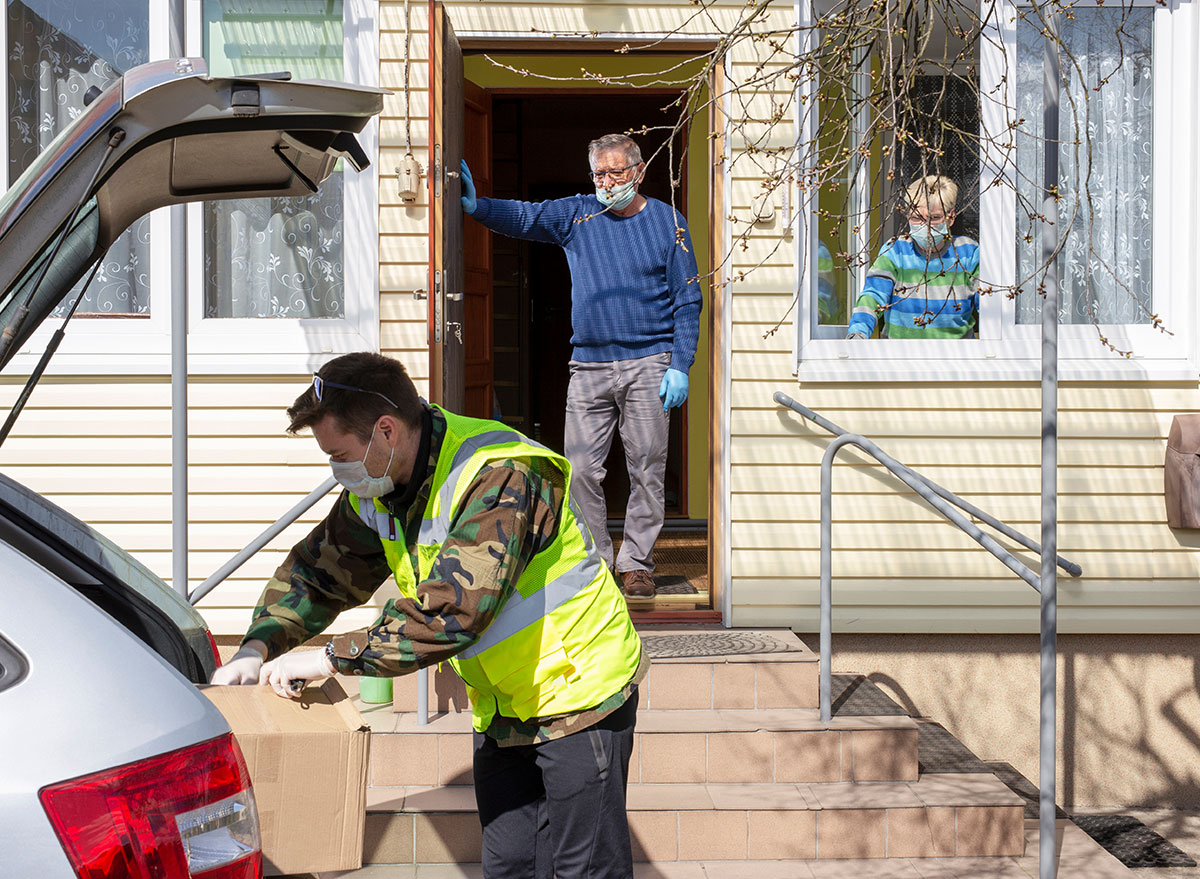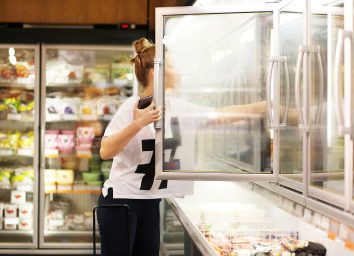A Massive Food Shortage Is Looming, Food Banks Warn

As coronavirus cases are rapidly on the climb nationwide, Americans are depending on food banks and pantries across the country more so than ever before. Unfortunately, such heavy reliance also means these places are being depleted of resources—and quickly.
Food banks across Texas, for example, are already preparing for food shortages between now and the early months of 2021. In addition to more Texans needing consistent access to food, three key federal and state programs that enabled food banks in-state to keep up with the demand this year are about to end. (Related: 8 Grocery Items That May Soon Be in Short Supply.)
"Food insecurity is twice as high as before the pandemic. We've had a lot of federal aid and that's all going away at the end of the year," Celia Cole, CEO of Feeding Texas—which coordinates the 21 food banks in the state—said to the Texas Tribune. "We are facing a kind of a food cliff and we are worried of how long we are going to be able to keep up with demand without the help of the federal government."
Feeding South Florida is currently facing similar challenges. Starting this week, food banks in the region will no longer have access to about 8.4 million pounds worth of produce, dairy, dry goods, and meat to give to patrons in need. The CARES Act program, which has provided the food bank with $5 million per month in food since April, is set to expire on Dec. 31.
"There's about to be a huge, huge need in South Florida," Paco Vélez, president and CEO of Feeding South Florida, said to the Sun-Sentinel. "What we received from the [U.S. Department of Agriculture] fed an extra 50,000 families. So we're going to buy $2 million worth of food in bulk today, and that will last us a couple of weeks. We can, realistically, do that one more time in mid-December, and then that's it."
At the beginning of October, Feeding America warned that it could face a deficit of up to 10 billion pounds of food between that month and June 2021—that's a shortage of about 8 billion meals. As the coronavirus continues to exacerbate job losses nationwide, but especially so in major, densely-populated cities.
In New York City, an estimated 1.5 million people currently cannot afford food. The New York Times reports that tens of thousands of residents have at some point, if not regularly, lined up outside of food pantries for the first time in their lives this year. And pop-up pantries are beginning to appear in vacant buildings to help keep up with the growing demand. For example, in Gardner, Kansas, a restoration church is now hosting "The Hope Market" food pantry twice a month to help families in the metro area.
Bottom line, if federal funding isn't renewed in the near year, the nation could be in for a devastating hunger crisis. Feeding America currently projects that more than 50 million people could experience food insecurity—a 50% increase from 2019.
For more, be sure to read up on What to Do If You Live in a Food Desert, and sign up for our newsletter for more updates.








